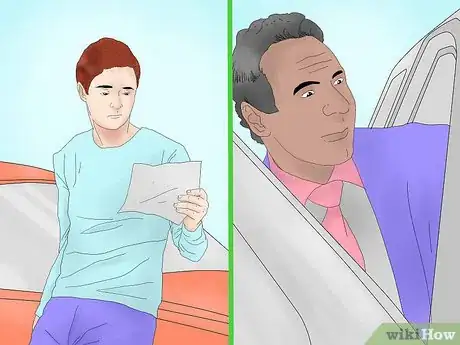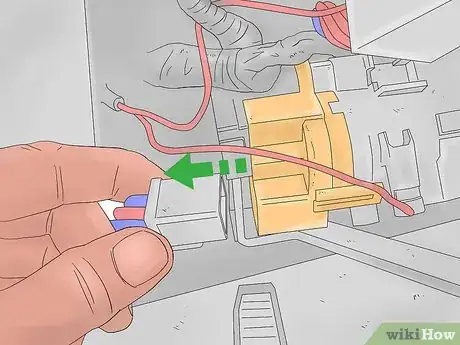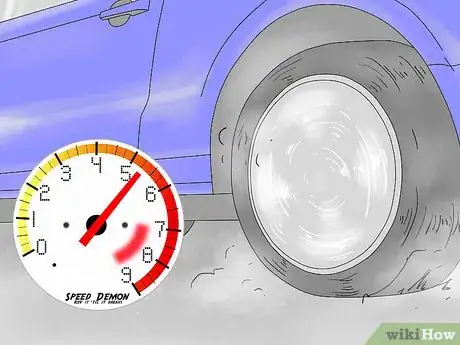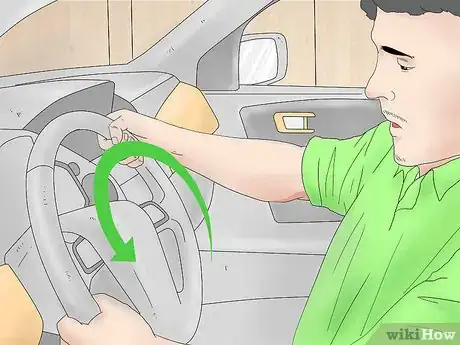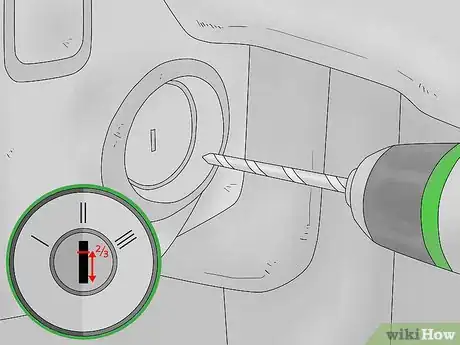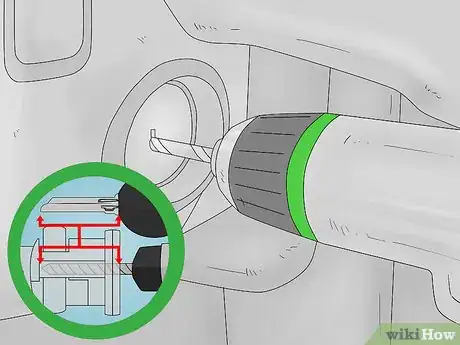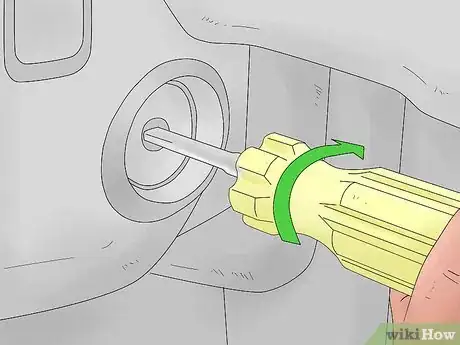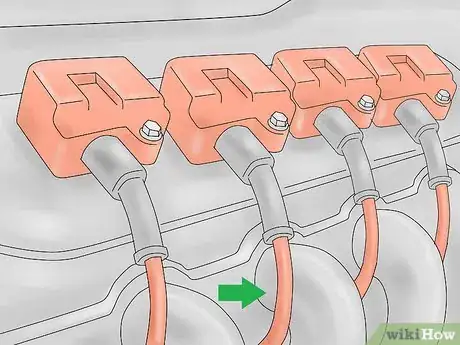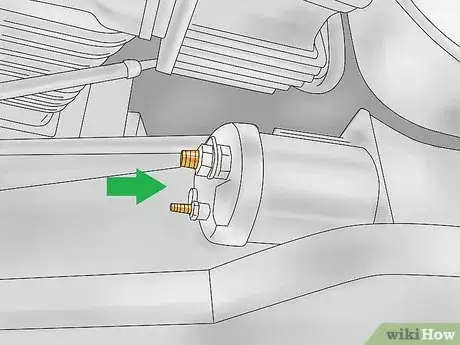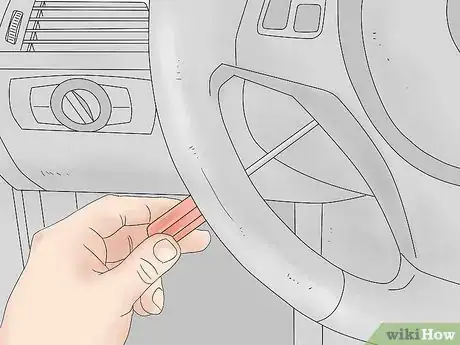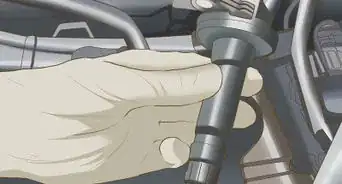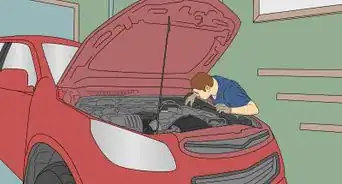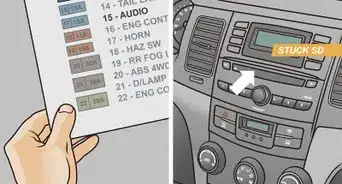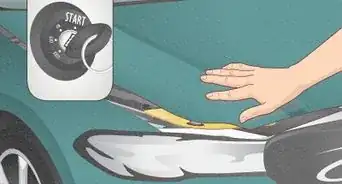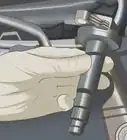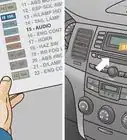wikiHow is a “wiki,” similar to Wikipedia, which means that many of our articles are co-written by multiple authors. To create this article, 114 people, some anonymous, worked to edit and improve it over time.
wikiHow marks an article as reader-approved once it receives enough positive feedback. In this case, several readers have written to tell us that this article was helpful to them, earning it our reader-approved status.
This article has been viewed 2,977,118 times.
Learn more...
While most newer model cars have done much to hide the wiring and otherwise outfit the steering column with safety measures to prevent hot-wiring, older models up to the mid-90s are typically good candidates for hot-wiring. This is important to know if you lose your keys and need to get your car driving again. Use extreme caution when messing with wiring and always consult the Owner's Manual for specific instructions about the color coding and wires associated with your model. If you want to know how to get started hot-wiring the steering column and using other methods, this article will be helpful.
Steps
Hot-Wiring the Steering Column
-
1Enter the car. Do not break into a car unless you own it and have documentation to prove it. Be aware that forced entry will set an alarm if the vehicle is equipped.
- This method, and in fact most methods of hot wiring a car, will only work on cars older than the mid-90s. Newer models are equipped with a whole host of locking mechanisms in place to keep you from hot-wiring the car unless you're intimately familiar with the quirks of the model. If you try this on a 2002 Honda Civic, you're likely to end up setting off alarms and locking the starter, meaning no one can drive it.
- If you have access to the owner's manual, check to make sure the steering column and gear selector can be overridden. Serious damage to the shifting mechanism and steering column can result from this method.
-
2Remove the plastic cover on the steering column. These are usually held in place with concealed clips or #2 Phillips-type screws. Remove them and pull the access panels free.[1]
- Alternatively, on some much older models, you can break the locking pins in the ignition by hammering a flathead screwdriver into the keyhole and turning it over. It's very difficult--if not impossible--to do this by hand, but if you think the model is sufficiently old to allow for it, you can give it a shot.
Advertisement -
3Find the wiring harness connector. Once you remove the panels on the steering column, you should see a roil of electrical wires. Don't be intimidated, learn to recognize the right bundle. There will typically be three main bundles of wires:
- Wires leading to the column-mounted controls on one side, like lights, cruise control, and other indicators
- Wires leading to the column controls on the other side, like wipers or seat warmers
- Wires leading to the battery, ignition, and starter leading straight up the steering column
-
4Pull aside the battery, ignition, and starter wire bundle. One of these will be the primary power supply for the ignition switch, one will be ignition wires, and the other will be the starter. The other colors will vary depending on the manufacturer. Read the owner's manual or look online to be sure you can identify all possibilities.[2]
- Sometimes the ignition wires are brown and the starter wires yellow, but the battery wires are most usually red. Again, the only way to be sure is to read the owner's manual. You're not MacGyver; messing with the wrong wires will get you electrocuted.
-
5Strip about 1 inch (2.5 cm) of insulation from the battery wires and twist them together. Wrap them with electrician's tape if available, and do not allow them to short against metal vehicle components. Connecting these will provide electricity for the ignition components, so the engine is able to run when the starter is turned.
-
6
-
7Being extremely careful, strip the starter wire about 1⁄2 inch (1.3 cm). This will be live, so you need to extremely careful and keep close hold of your bare wires. Touch the end of this to the connected battery wires. Don't try to twist it on, just spark it against the battery wires to start the car.
-
8Rev the engine. If you get the car to start, rev it a few times so you don't stall out and have to do this process again.
- Once the engine starts, you can detach the starter wire and continue on your way. When you want to kill the engine, simply unfasten the battery wires from the ignition wires and the car will die.[4]
-
9Break the steering lock. You've got the car started and you're ready to get your engine pumping and let your car loose, right? Wrong. While your car is running, the steering column is probably locked at this point, meaning that you'll have to break it to be able to steer, unless you want to drive straight off a cliff or something.[5]
- On some models, all you'll need to do is pop off the metal keyhole which will release a spring and break the lock. If you already tried to jam your screwdriver in there earlier because you've got a mid-70s to mid-80s vehicle, the lock is probably already broken.
- Some models respond well to a healthy dose of elbow grease. Crank the wheel hard to either side as if you were trying to twist it free. You could also use a hammer to fix in the wheel and use for leverage. You should hear it break and the wheel will be free, so you'll be able to drive normally.
Drilling the Lock Pins
-
1Position the drill on the keyhole about 2/3 of the way up. Your goal with this method is to destroy the lock pins and allow you to turn the car over using a screwdriver, rather than the key. This is commonly done on cars the keys to which are lost.[6]
-
2Drill in about the length of a key. Every lock pin has two sections followed by a spring, so drill it more than once, removing the drill each time to allow the bits of the lock inside to fall into place.[7]
-
3Put the screwdriver in the same way you would put your key in. It doesn't have to go in deep because the pins are already broken. Use it the same way you use your key, just turn it about a quarter-turn in a clockwise direction to try to turn the engine over.[8]
- Warning: this method will destroy your key switch and make it so that anyone with a screwdriver or a strong fingernail can steal your car.
Powering the Dash
-
1Open the hood and locate the red coil wire. Both the plug and coil wires are located at the rear of almost all V8 engines. Four-cylinder engines have them placed on the right side, near the center of the engine. Six-cylinder engines are on the opposite: left side, near the center of the engine.
-
2Get out your jump cables. Run a jump cable from the positive battery terminal to either the positive side of the coil, or the red wire that leads to the coil. This will give power to the dashboard, which is essential if you want to start the engine.
-
3Locate the starter solenoid. On Ford cars, it is on the right-side fender well, near the battery. On GM cars, it is on the starter under the steering wheel.
-
4Unlock the steering wheel. Place a flat blade screwdriver in the top center of the steering column, pushing between the wheel and the column. You want to push the locking pin away from the wheel. Don't worry, you're allowed to be rough here.
- The locking pin will not break or set off any alarms and you should be able to find the solenoid should be underneath.
-
5Connect the solenoid to the positive battery terminal. You will see a small wire at the top of the solenoid and the positive battery cable below. Remove the ignition switch wire from the solenoid and, using an insulated screwdriver, short the solenoid's positive post to the terminal where the ignition switch connects.
- Doing so will apply 12 volts directly from the battery. This should activate the solenoid, and the starter should crank the car.
Community Q&A
-
QuestionCan a car that has no gas be hotwired?
 Community AnswerNo. Without gas the engine will not be able to create a spark to move the pistons.
Community AnswerNo. Without gas the engine will not be able to create a spark to move the pistons. -
QuestionHow do I hotwire a car?
 Community AnswerYou should follow the directions that are laid out in the article if you are going to hotwire a care.
Community AnswerYou should follow the directions that are laid out in the article if you are going to hotwire a care. -
QuestionIs there a way to crank my engine from under the hood so that I can spray starting fluid in while it's turning over?
 Community AnswerYou could use a starter switch. Hook it up to the battery, and whenever you pull the trigger it'll be the same as turning the key.
Community AnswerYou could use a starter switch. Hook it up to the battery, and whenever you pull the trigger it'll be the same as turning the key.
Warnings
- Wear insulated gloves.⧼thumbs_response⧽
- If the ignition wires separate while driving, the engine will instantly die, and you may find yourself without power, steering, or brakes.⧼thumbs_response⧽
- Don't use this in an illegal manner, such as to steal a car.⧼thumbs_response⧽
References
- ↑ https://www.mrvehicle.net/how-to-hotwire-a-car/
- ↑ https://www.mrvehicle.net/how-to-hotwire-a-car/
- ↑ http://howto.wired.com/wiki/Hot_Wire_Your_Car
- ↑ http://jalopnik.com/5871510/how-to-hotwire-a-car/gallery/?comment=45569978#comments
- ↑ https://www.mrvehicle.net/how-to-hotwire-a-car/
- ↑ https://www.fireengineering.com/articles/print/volume-157/issue-9/departments/training-notebook/drilling-lock-cylinders.html
- ↑ https://www.fireengineering.com/articles/print/volume-157/issue-9/departments/training-notebook/drilling-lock-cylinders.html
- ↑ http://www.survivalistdaily.com/how-to-hot-wire-a-car/
About This Article
You may need to hotwire your car if you've lost your keys or are in an emergency situation. Keep in mind that only older models of cars made up to the mid-90s can be hotwired. Newer cars have built-in safety features that prevent them from being hotwired. Also, hotwiring your car can cause permanent damage, so only do this as a last resort. To get started, first insert the end of a flathead screwdriver into the ignition. Tap the back of the handle with a hammer to force the head of the screwdriver all the way in. Then, turn the screwdriver like a key. This alone might start your car, in which case you're finished. If it doesn’t, remove the screwdriver and use it to take out the screws holding the cover around your steering column in place. Peel the cover off and set it aside to reveal the wiring underneath. Locate the power and starter cables. The starter cables are typically the two brown wires, and the power cables are usually the two red wires, but you should consult your vehicle's manual to make sure. Put on some insulated gloves and cut the two power wires with a set of wire cutters. Strip the ends off to reveal the insulation, then twist the power wires together with a pigtail to turn the power in the vehicle on. Next, cut and strip the starter wires, being careful not to touch them together to avoid shorting them or shocking yourself. Hold them with both hands and carefully and slowly touch the exposed wires together. As soon as the car starts, release them and tape the ends with electrical tape to prevent further damage. If the steering wheel is locked up, consult your car's manual or look online to see if the locking mechanism can be tricked or adjusted with a screwdriver. You may need to stick a flathead screwdriver in between the joint where the steering column meets the wheel to keep it unlocked. To learn how to hotwire a car by drilling the lock pins, scroll down!
